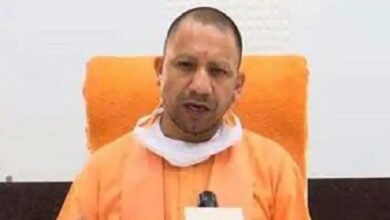[ad_1]
UPSC Essentials brings to you its initiative of daily subject-wise quizzes. These quizzes are designed to help you revise some of the most important topics from the static part of the syllabus. Each day, we cover one new subject. Attempt today’s subject quiz on Polity and Governance to check your progress. Come back tomorrow to solve the History, Culture, and Social Issues MCQs. Don’t miss checking the answers and explanations at the end of the quiz.
With reference to the electronic voting machines (EVMs), consider the following statements:
1. The Electronics Corporation of India (ECIL), a public-sector undertaking, presented the first EVM prototype before political parties in 1980.
2. The Voter Verifiable Paper Audit Trail (VVPAT) machine, the second part of the EVM, was first used in a pilot in one Assembly constituency of Kerala.
Which of the statement(s) given above is/are correct?
(a) 1 only
(b) 2 only
(c) Both 1 and 2
(d) Neither 1 nor 2
QUESTION 2
Consider the following pairs:
| State | Number of seats (Legislative Assembly) |
| Madhya Pradesh | 200 |
| Chhattisgarh | 90 |
| Rajasthan | 230 |
| Mizoram | 40 |
How many of the pairs given above are correctly matched?
(a) Only one
(b) Only two
(c) Only three
(d) All four
QUESTION 3
Consider the following:
1. To communicate to the President all decisions of the Council of Ministers relating to the administration of the affairs of the Union.
2. To furnish such information relating to the administration of the affairs of the Union.
3. To submit for the consideration of the Council of Ministers if the President so requires.
How many of the above are the Prime Minister’s duties concerning furnishing information to the President?
(a) Only one
(b) Only two
(c) All three
(d) None
QUESTION 4
With reference to the Universal Declaration of Human Rights, consider the following statements:
1. The Universal Declaration of Human Rights was approved by the United Nations (UN) General Assembly.
2. It does not consist preamble.
3. The declaration is legally binding.
How many of the statements given above are correct?
(a) Only one
(b) Only two
(c) All three
(d) None
QUESTION 5
Which articles of the Constitution of India provide for Continuance of the rights of citizenship?
(a) Article 8
(b) Article 7
(c) Article 9
(d) Article 10
ANSWERS TO THE MCQs
1. (a)
FYI:
— The Electronics Corporation of India (ECIL), a public-sector undertaking, presented the first EVM prototype before political parties on August 6, 1980. Hence, statement 1 is correct.
— On May 19, 1982, the pilot was held in 50 polling stations in Kerala’s Parur Assembly constituency.
— On the recommendation of a Technical Expert Committee (TEC) appointed to examine EVMs, the EC in April 1990 decided to use EVMs.
— In 1998, EVMs were used in 16 Assembly elections, including in Madhya Pradesh, Rajasthan and Delhi.
— The Voter Verifiable Paper Audit Trail (VVPAT) machine, the second part of the EVM, was first used in a pilot in one Assembly constituency of Nagaland in 2013. Hence, statement 2 is not correct.
— Since the 2019 Lok Sabha elections, the VVPAT has been used with EVMs in all elections.
Therefore, option (a) is the correct answer.
2. (b)
FYI:
Therefore, option (b) is the correct answer.
3. (c)
FYI:
— Article 78 of the Constitution of India provides for duties of Prime Minister as respects the furnishing of information to the President, etc.
— It shall be the duty of the Prime Minister:
(a) to communicate to the President all decisions of the Council of Ministers relating to the administration of the affairs of the Union and proposals for legislation;
(b) to furnish such information relating to the administration of the affairs of the Union and proposals for legislation as the President may call for; and
(c) if the President so requires, to submit for the consideration of the Council of Ministers any matter on which a decision has been taken by a Minister but which has not been considered by the Council.
Therefore, option (c) is the correct answer.
(Source: Constitution of India)
4. (a)
FYI:
— At a meeting in Paris seventy-five years ago, the United Nations General Assembly approved the Universal Declaration of Human Rights, laying one of the cornerstones of the international order that emerged after the horrors of World War II. Hence, statement 1 is correct.
— The declaration was proclaimed as “a common standard of achievement for all peoples and all nations.
— A relatively compact document, the declaration consists of a preamble and 30 articles setting out fundamental rights and freedoms. Hence, statement 2 is not correct.
— Article 1 states that “all human beings are born free and equal in dignity and rights.”
— Article 2 says that everyone is entitled to all the rights and freedoms the declaration sets out, “without distinction of any kind, such as race, colour, sex, language, religion, political or other opinion, national or social origin, property, birth or other status.”
— The declaration says that “all are equal before the law” and that everyone is entitled to “a fair and public hearing by an independent and impartial tribunal.”
— The declaration isn’t a treaty and isn’t legally binding in itself, but the principles it sets out have been incorporated into many countries’ laws and it is viewed as the basis for international human rights law. Hence, statement 3 is not correct.
Therefore, option (a) is the correct answer.
5. (d)
FYI:
— Article 10 of the Constitution of India provides for continuance of the rights of citizenship.
— Every person who is or is deemed to be a citizen of India under any of the foregoing provisions of this Part shall, subject to the provisions of any law that may be made by Parliament, continue to be such citizen.
Therefore, option (d) is the correct answer.
(Source: Constitution of India)
Previous Daily Subject-Wise-Quiz
Daily subject-wise quiz — Polity and Governance (Week 35)
Daily Subject-wise quiz — History, Culture, and Social Issues (Week 35)
Daily subject-wise quiz — Environment, Geography, Science and Technology (Week 35)
Daily subject-wise quiz — Economy (Week 35)
Daily subject-wise quiz – International Relations (Week 35)
Subscribe to our UPSC newsletter and stay updated with the news cues from the past week.
[ad_2]





